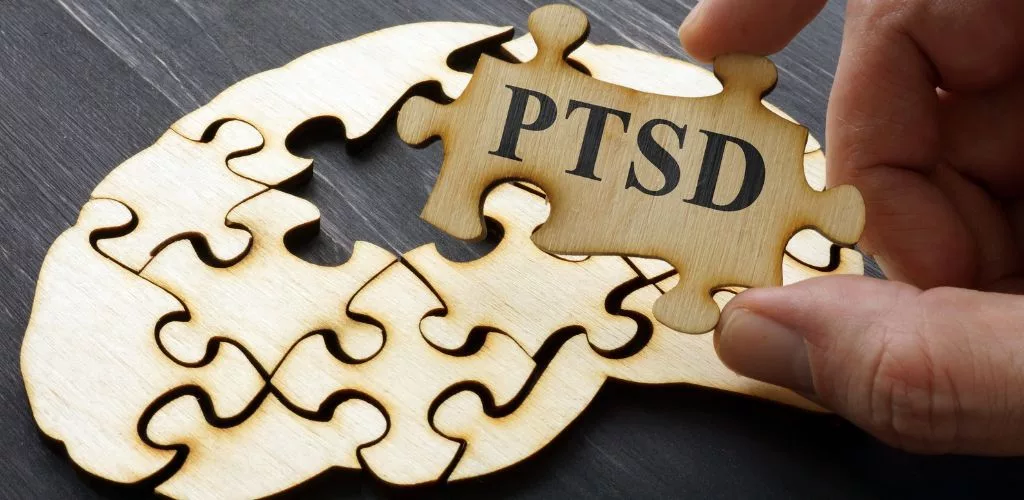
Post-Traumatic Stress Disorder, often abbreviated as PTSD, stands as a formidable challenge in the realm of psychiatric disorders. Stemming from the shadows of harrowing experiences, this condition manifests in those who have either undergone or witnessed events so traumatic that they leave a lingering psychological scar. From catastrophic natural disasters to the brutalities of war, from the abrupt death of someone close to violent physical assaults—these experiences can shatter the peace of the mind, giving birth to PTSD. Understanding the intricacies of PTSD isn’t merely an academic endeavor. Rather, delving deep into its nuances empowers us as a society, creating an environment of understanding and compassion for survivors. This deeper comprehension ensures that sufferers are not unjustly labeled or isolated, but are provided with the empathy and support they crucially need.
What is PTSD?
Post-Traumatic Stress Disorder (PTSD) is classified as a psychiatric disorder that emerges in some individuals as a result of witnessing or undergoing a harrowing, traumatic event. This trauma often encompasses scenarios that pose a serious threat to the individual’s life or personal integrity, or when they have witnessed others facing such dire threats.
The Experience of PTSD
Living with PTSD isn’t simply about having memories of a traumatic event. It’s about reliving that trauma, sometimes daily, in a visceral and deeply emotional way. Imagine a record player that keeps playing the same distressing track over and over, sometimes when least expected. For someone with PTSD, certain triggers, which might seem mundane or unrelated to others, can catapult them back into the intensity of the traumatic moment. The past trauma feels disturbingly present, making the world seem unpredictable and unsafe.
Symptoms
PTSD manifests through a series of symptoms, which can vary in intensity and frequency among individuals:
1. American Psychiatric Association. (2022). Trauma- and Stressor-Related Disorders. In Diagnostic and Statistical Manual of Mental Disorders (5th ed., text rev.)
- Re-experiencing the Trauma: This includes distressing memories of the traumatic event, nightmares, and vivid flashbacks where the person feels like they are reliving the trauma.
- Avoidance: Individuals may steer clear of situations, places, or people that remind them of the traumatic event. This could extend to avoiding conversations about the trauma or trying to suppress memories associated with it.
- Changes in Mood and Cognition: This can involve feelings of detachment from loved ones, persistent negative emotions (like shame or guilt), an inability to remember critical aspects of the traumatic event, and a persistent negative outlook on oneself, others, or the world at large.
- Hyperarousal: This refers to being constantly on guard or jittery. Symptoms might include irritability, angry outbursts, difficulty sleeping, being easily startled, or feeling always on edge.
Understanding these symptoms is pivotal in recognizing and supporting those with PTSD. It offers insights into their daily struggles and paves the way for empathy, patience, and appropriate intervention.
Causes of PTSD:
Delving into the origins of Post-Traumatic Stress Disorder, it’s evident that PTSD is not birthed from a singular cause. Instead, it’s the intricate interplay of biological, environmental, and psychological factors that culminate in this condition. While trauma lies at the heart of PTSD, the manner in which our brains, hormones, genetics, and personal histories respond to that trauma are pivotal in determining its onset. Here, we dissect these multifaceted factors that contribute to the development of PTSD.
1. Exposure to Trauma
Direct Interaction with Trauma
Experiencing the traumatic event first-hand can create vivid memories that may be harder to process or overcome. Direct experiences such as personal assaults, military combat, or being caught in a life-threatening situation can significantly elevate the risk of PTSD.
Witnessing Trauma
It’s not only the direct victims of trauma who are affected. Those who witness traumatic events, like seeing someone else harmed or killed, can also be deeply impacted and develop PTSD.
2. Bisson J. I., Cosgrove S., Lewis C., Robert N. P. (2015). Post-traumatic stress disorder. BMJ
Learning about Trauma to a Loved One
Discovering that a close friend or family member has experienced a life-threatening event or has died suddenly can cause PTSD, even if the person wasn’t directly present at the event.
2. Brain Function
Amygdala’s Role
The amygdala is a part of the brain associated with emotion and fear. Research suggests that heightened activity in the amygdala in response to threats could play a role in the flashbacks and nightmares experienced by those with PTSD.
Hippocampus Changes
The hippocampus, involved in memory processing, might be affected in PTSD. Some studies indicate a reduced volume in this region in those with PTSD, potentially influencing how traumatic memories are processed.
3. Hormonal Factors
Stress Hormones
Cortisol, a primary stress hormone, helps regulate our body’s fight-or-flight response. However, persistent or irregular elevations in cortisol after a traumatic event might exacerbate the symptoms of PTSD.
Adrenaline Surge
Adrenaline, another stress hormone, surges during high-stress scenarios. If its levels don’t normalize after the traumatic event, it can contribute to prolonged anxiety and hyperarousal symptoms in PTSD.
4. Genetics
Inherited Mental Health Risks
Just as certain physical traits are inheritable, so too are vulnerabilities to various mental health disorders. If a close family member has PTSD or another anxiety disorder, it might increase an individual’s risk.
Temperament
Innate temperament, which is influenced by genetics, can play a role. Some people are naturally more resilient or adaptable to stress, while others are more reactive or sensitive.
5. Previous Traumatic Experiences
Childhood Events
Traumatic experiences during the formative years, such as physical or sexual abuse, can make an individual more susceptible to PTSD later in life.
Cumulative Trauma
The more traumatic events an individual experiences, the higher the risk. Multiple exposures can compound the emotional and psychological stress, making it harder for the individual to process subsequent traumas.
By dissecting the multifaceted causes of PTSD, we can better comprehend the intricate nature of this condition, paving the way for more targeted interventions and support mechanisms.
Treatment of PTSD
Cognitive Behavioral Therapy (CBT)
Cognitive Behavioral Therapy, often referred to as CBT, stands as one of the most widely practiced treatments for PTSD. Rooted in the principles of cognitive psychology, CBT emphasizes understanding and modifying negative thought patterns and behaviors associated with trauma. Through a series of sessions, therapists work with patients to recognize these patterns, challenge them, and replace them with healthier coping mechanisms. Over time, this structured, goal-oriented therapy can help patients gain control over the distressing memories and reactions associated with their trauma.
Eye Movement Desensitization and Reprocessing (EMDR)
Another notable therapy, especially tailored for trauma, is Eye Movement Desensitization and Reprocessing or EMDR. This therapy combines aspects of cognitive therapy with directed eye movements. Here’s how it works: while recalling distressing trauma-related memories, patients undergo bilateral sensory input, most commonly in the form of guided eye movements. This process helps in reprocessing the memory, potentially making it less emotionally charged. Over several sessions, many patients find that the intensity of their traumatic memories decreases, aiding in their overall recovery.
3. Monson, C. M. & Shnaider, P. (2014). Treating PTSD with cognitive-behavioral therapies: Interventions that work. Washington, DC: American Psychological Association
Medication
Medication can play an instrumental role in the treatment of PTSD, particularly when used in conjunction with psychotherapy. Antidepressants, such as selective serotonin reuptake inhibitors (SSRIs) and serotonin-norepinephrine reuptake inhibitors (SNRIs), are often prescribed to manage the depressive and anxious symptoms associated with PTSD. These medications aim to restore the chemical balance in the brain, thereby promoting emotional well-being. However, it’s pivotal for patients to consult with a psychiatrist for an appropriate diagnosis and to discuss potential side effects before starting any medication.
Prolonged Exposure Therapy
Prolonged Exposure Therapy revolves around confronting both the traumatic memories and the situations or places that evoke fear and anxiety in a controlled and safe environment. With the guidance of a trained therapist, patients gradually recount the traumatic event and expose themselves to trauma reminders. The idea behind this repetitive confrontation is to reduce the power and emotional charge these memories hold, allowing patients to regain a sense of control and diminish the overwhelming fear associated with their trauma.
Modern Treatment Methods
Innovation in PTSD treatments continues to evolve, providing newer avenues for healing. One such method is Virtual Reality Exposure Therapy. By using virtual reality (VR), patients can immerse themselves in simulations of traumatic situations in a controlled setting, allowing for gradual desensitization and coping strategy development. Another emerging approach is MDMA-assisted psychotherapy. Here, under strict clinical supervision, the drug MDMA (often known as ecstasy) is used to catalyze therapeutic sessions. Preliminary results have shown that MDMA can enhance the therapeutic process by decreasing defensiveness, increasing introspection, and strengthening the patient-therapist relationship, thus facilitating deeper emotional processing.
Each individual’s journey with PTSD is unique, making personalized treatments essential. The mentioned therapies, along with continuous research and development, provide hope for many seeking relief from this profound disorder.
4. Shapiro, F. (2017). Eye movement desensitization and reprocessing (EMDR) therapy: Basic principles, protocols and procedures. (3rd ed.). New York, NY: Guilford Press
5. Rothbaum, B. O., Foa, E. B., & Hembree, E. A. (2007). Reclaiming your life from a traumatic experience: A prolonged exposure treatment program. Oxford University Press
6. Smith K. W., Sicignano D. J., Hernandez A. V., White C. M. (2022). MDMA-Assisted Psychotherapy for Treatment of Posttraumatic Stress Disorder: A Systematic Review With Meta-Analysis. J Clin Pharmacol
Conclusion
Understanding Post-Traumatic Stress Disorder (PTSD) requires more than just an acknowledgment of its existence; it demands an appreciation of the profound effects it can have on an individual’s entire life. Trauma, in its many forms, doesn’t just imprint memories—it can alter perceptions, reshape identities, and redefine daily realities. For those who suffer, the battle often extends beyond the initial traumatic event, leading to recurring flashbacks, persistent fears, and a constant struggle for emotional equilibrium.
Moreover, as we delve deeper into the complexities of PTSD, we also uncover the resilience of the human spirit. The myriad of treatments, from tried-and-true therapies like CBT to innovative interventions such as Virtual Reality Exposure, showcases our unyielding commitment to addressing and alleviating the afflictions of the mind.
In this journey towards healing, it’s imperative for society at large to act as allies. Being informed, empathetic, and proactive in supporting PTSD sufferers not only aids their personal recovery but also strengthens the communal fabric. Recognizing the invisible wounds, offering understanding and patience, and advocating for resources and research will ensure that the shadows of trauma are met with the light of collective compassion and care.





